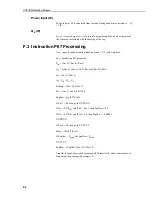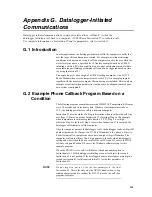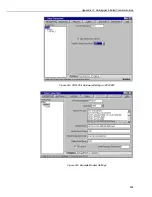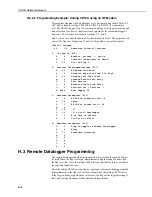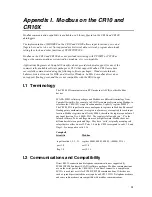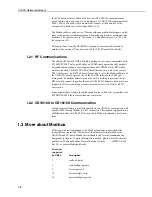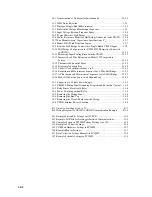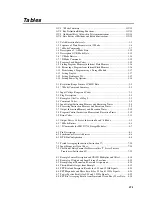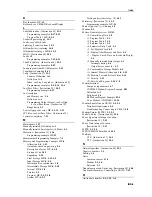
CR10X Reference Manual
H-4
H.2.2.2 Programming Example: Calling CR10X using an RF Modem
This program fragment calls a datalogger every 2 minutes using the RF Path of ‘4
10F’ (that is from the calling CR10X to RF ID# 4 to RF ID# 10 at the remote
site). The CR10X toggles Flag 1 in the remote datalogger to trigger measuring and
data collection. It collects 3 input locations beginning at the remote datalogger’s
location 1. These values are stored in locations 2, 3, and 4.
Flag 2 is used to control Instruction 97 (when to make the call). The program need
only set the flag low; Instruction 97 will set it high after a successful transfer.
*Table 1 Program
01:
1.0
Execution Interval (seconds)
1: If time is (P92)
1:
0
Minutes (Seconds --) into a
2:
2
Interval (same units as above)
3:
22
Set low Flag 2
2: Initiate Telecommunications (P97)
1:
02
RF Modem/9600 Baud
2:
2
Disabled when User Flag 2 is High
3:
45
Seconds Call Time Limit
4:
0
Seconds Before Fast Retry
5:
0
Fast Retries
6:
0
Minutes before Slow Retry
7:
1
Failures Loc [ Failures ]
8:
0000
Data Logger ID
3: Extended Parameters (P63)
1:
4
RF ID# of repeater site = 4
2:
32
Space
3:
1
RF ID# of second site = 10
4:
0
5:
70
‘F’
6:
68
‘D’ to call datalogger
7:
3
# of Locs to Collect
8:
1
1st Loc to Collect
4: Extended Parameters (P63)
1:
1
Flag to toggle in Remote Datalogger
2:
0
Delay
3:
13
Terminate character
4:
0
5:
0
6:
0
7:
0
8:
0
H.3 Remote Datalogger Programming
The remote datalogger should be programmed to detect when the specified flag is
set high. When the flag is set high, measurements and processing are done; then
the flag is set low. Once the calling CR10X detects that the flag is low, it collects
the specified input locations.
Since the calling CR10X sets the flag by toggling it, the remote datalogger should
be programmed so the flag is always low except when the calling CR10X sets it.
If the flag is already high when the call occurs, the flag will be toggled (setting it
low), and the input locations will be transferred immediately.



